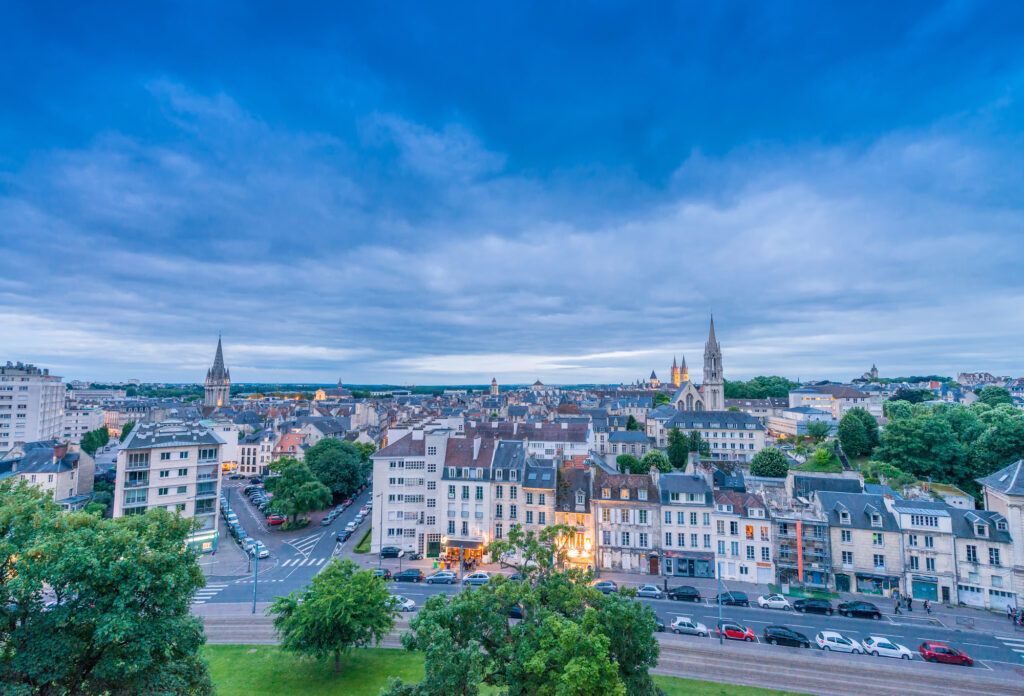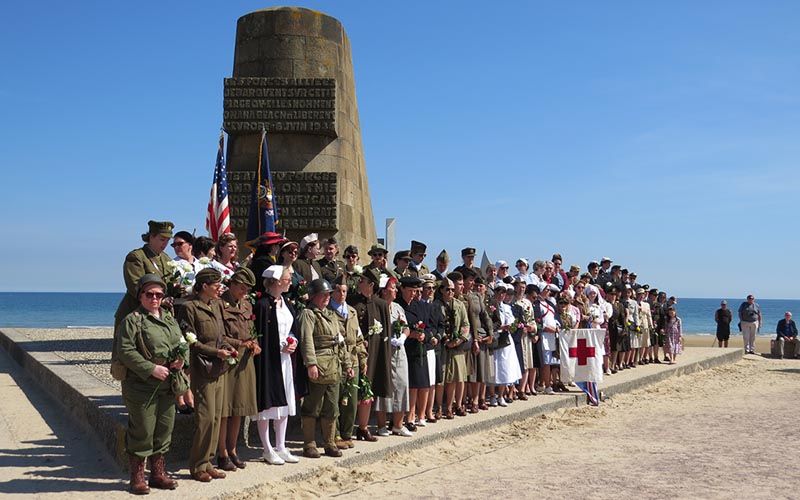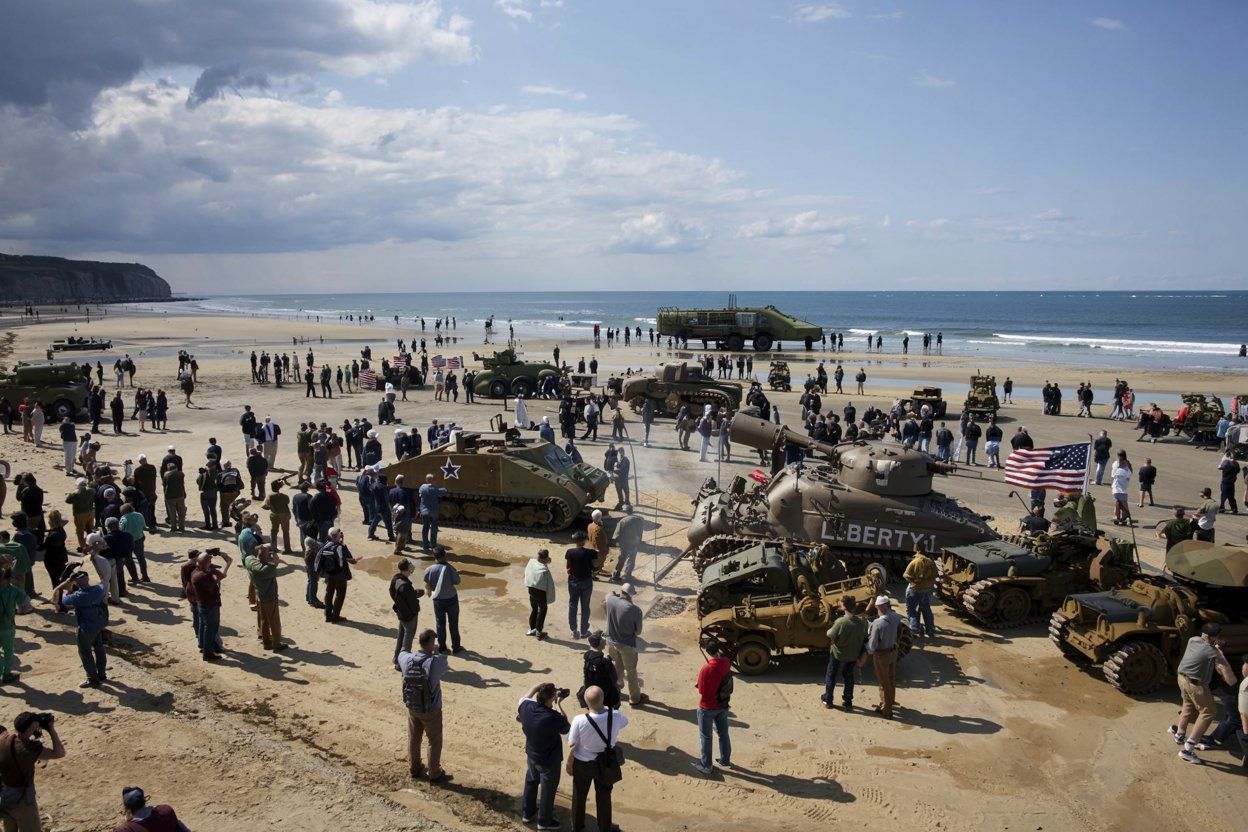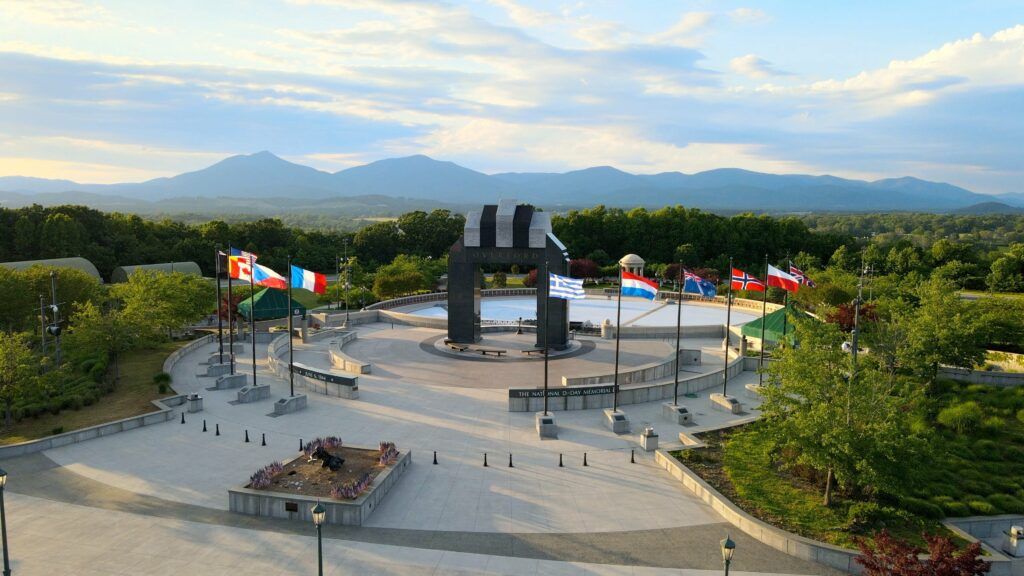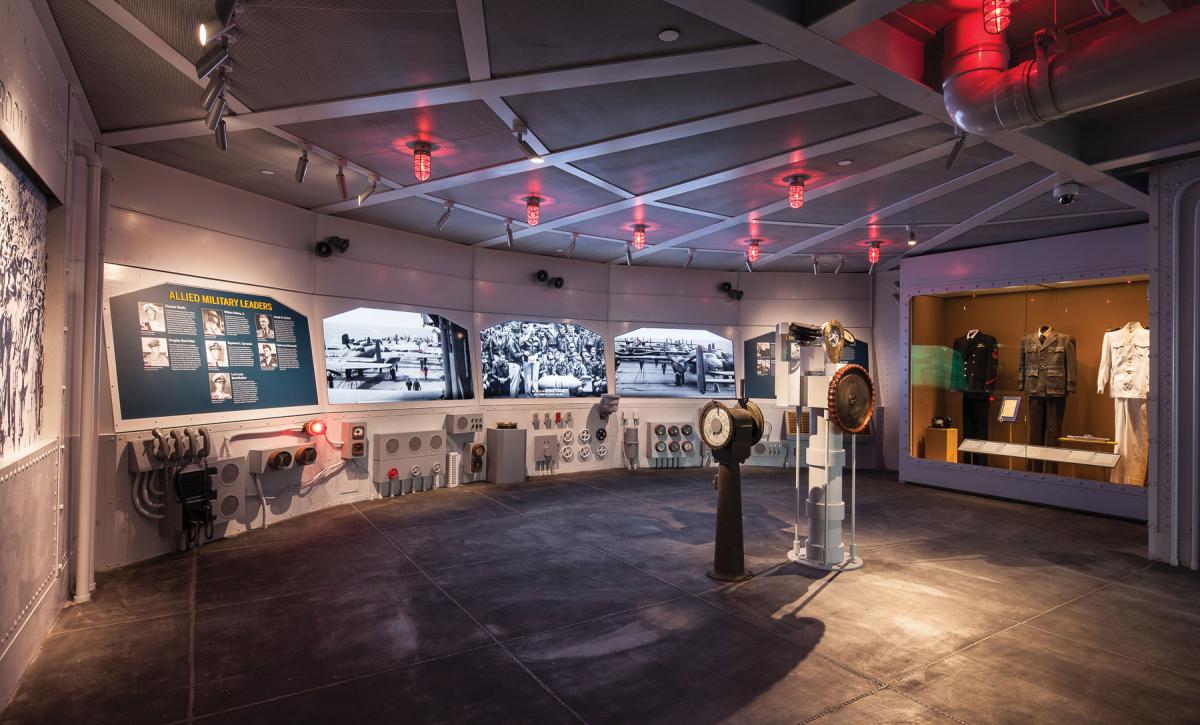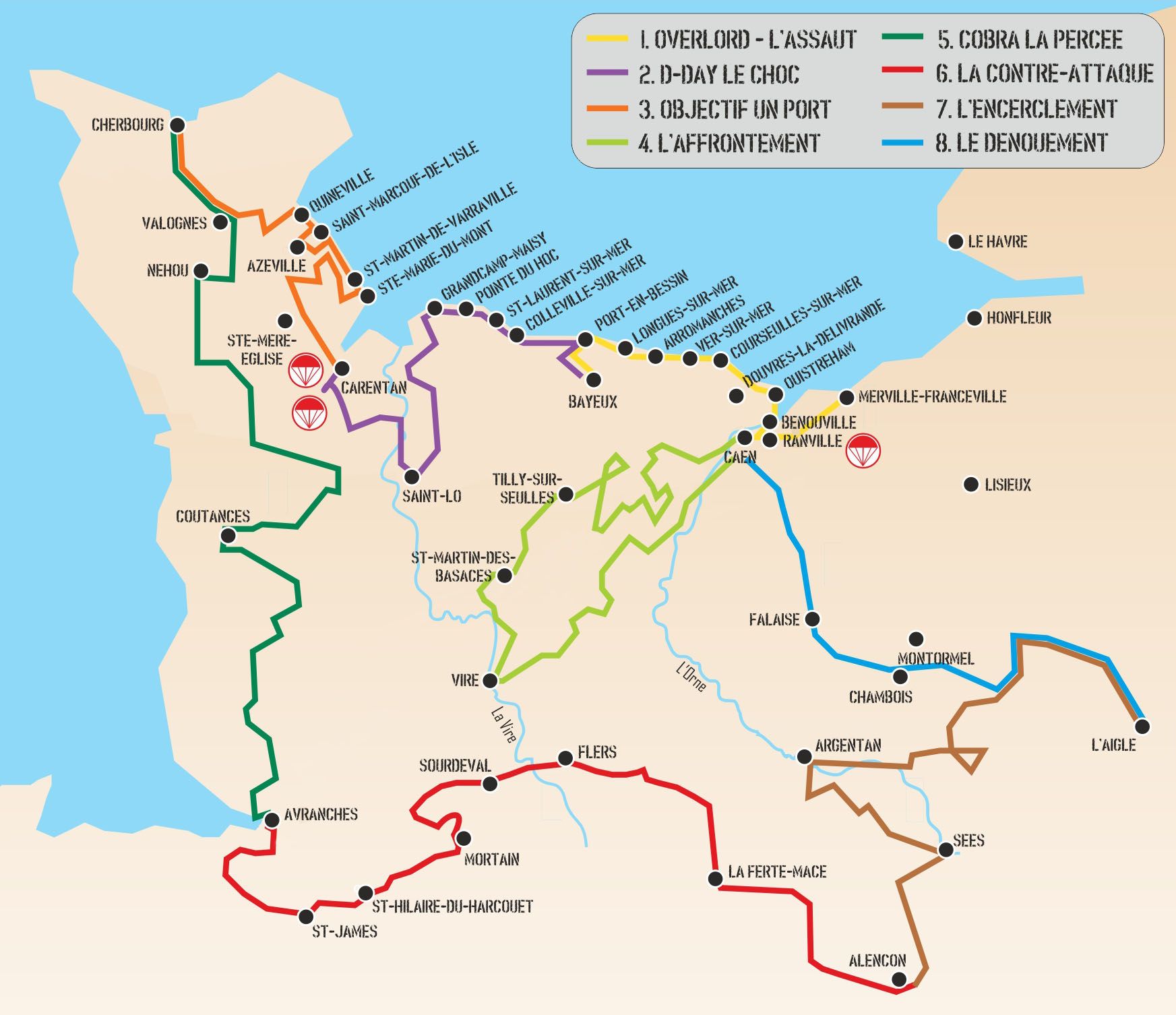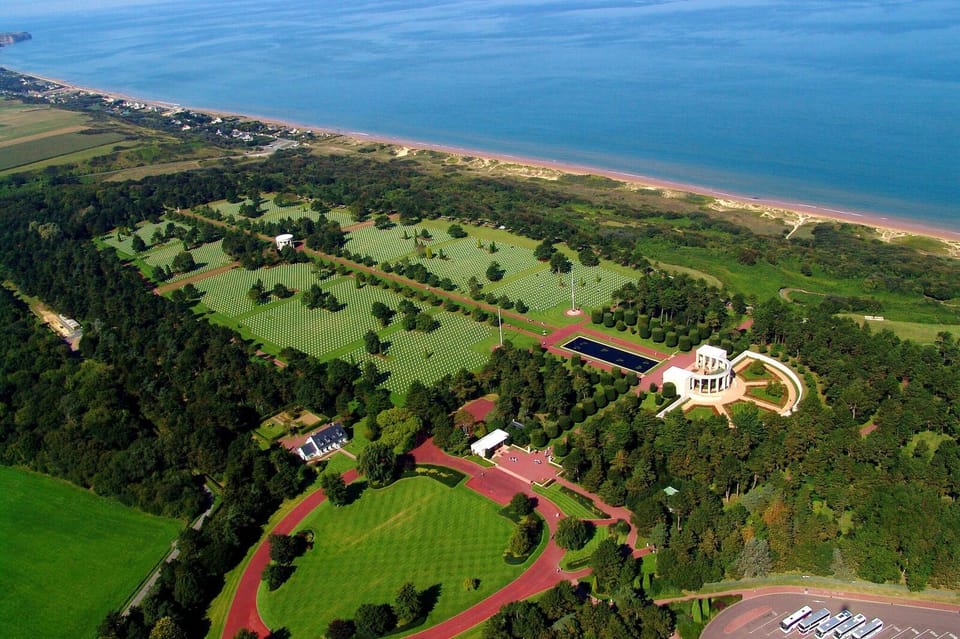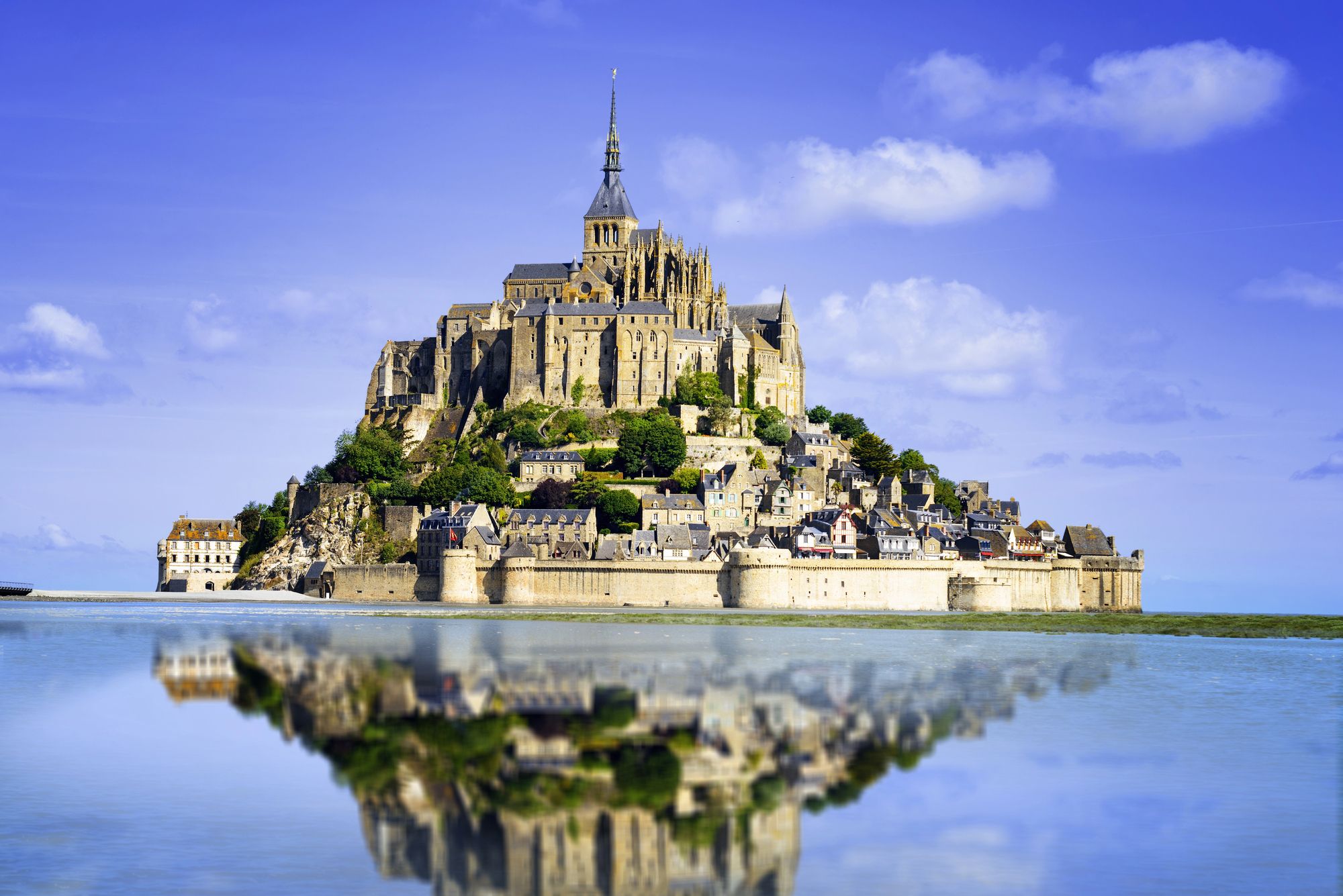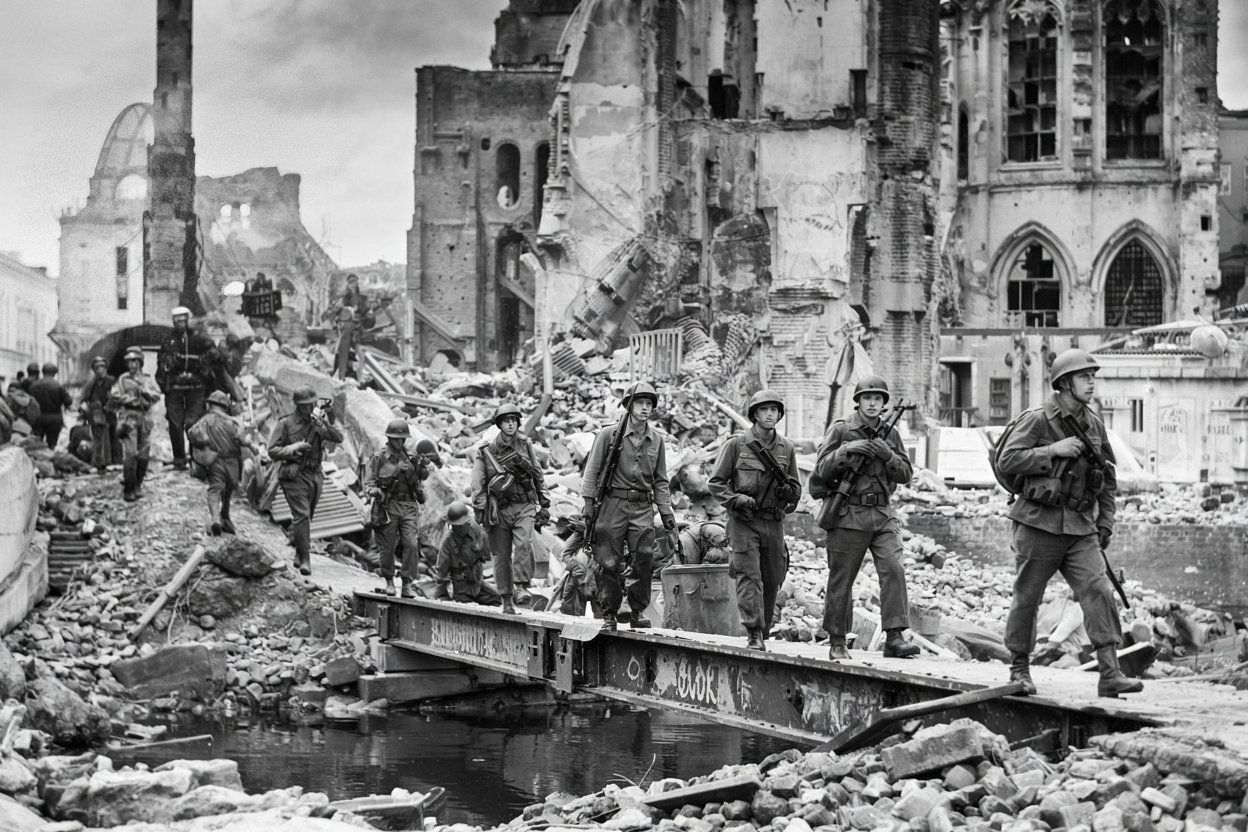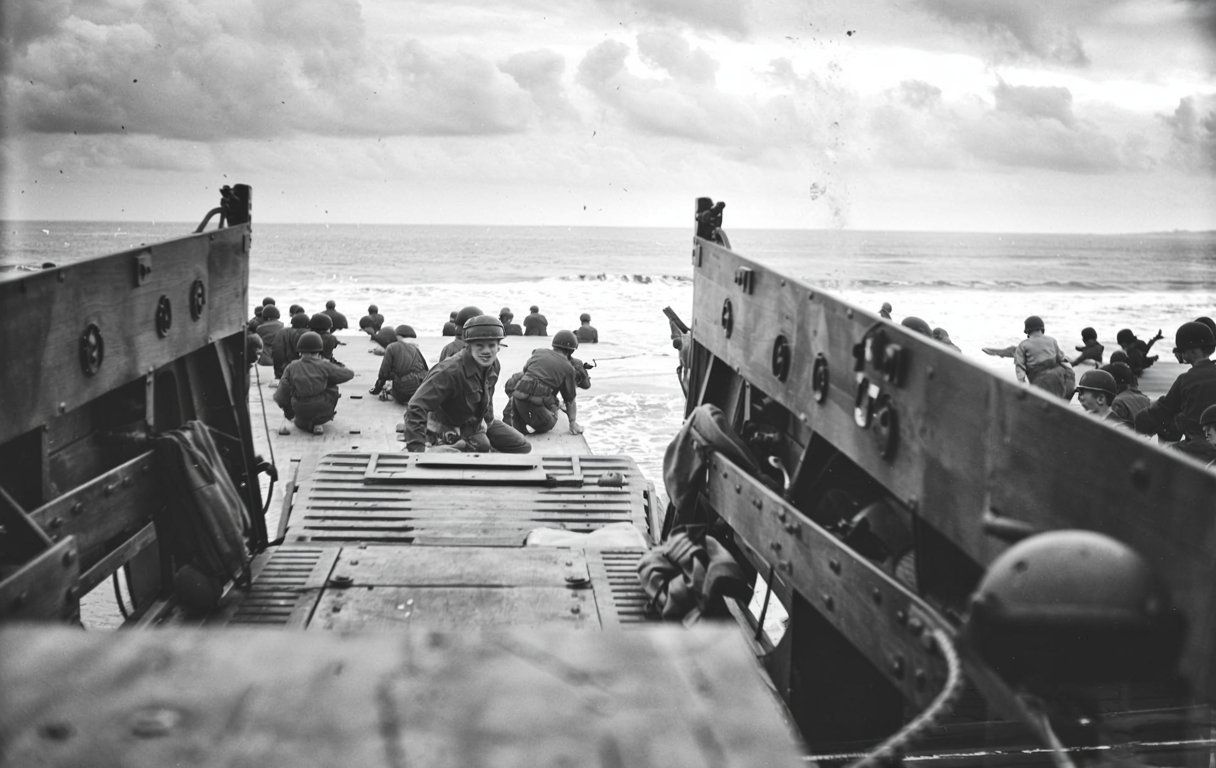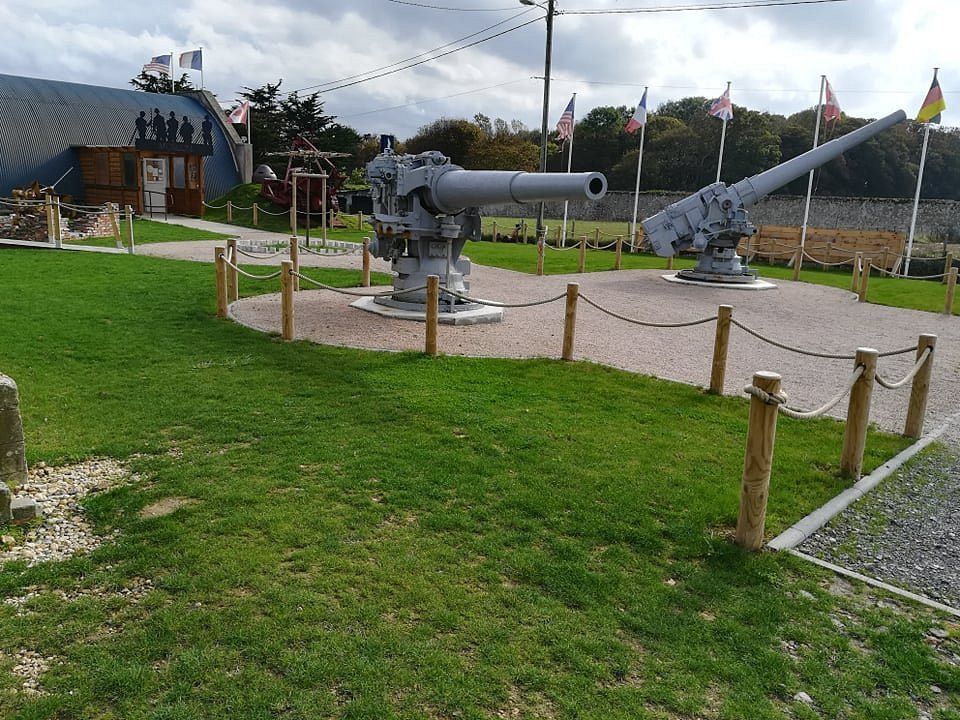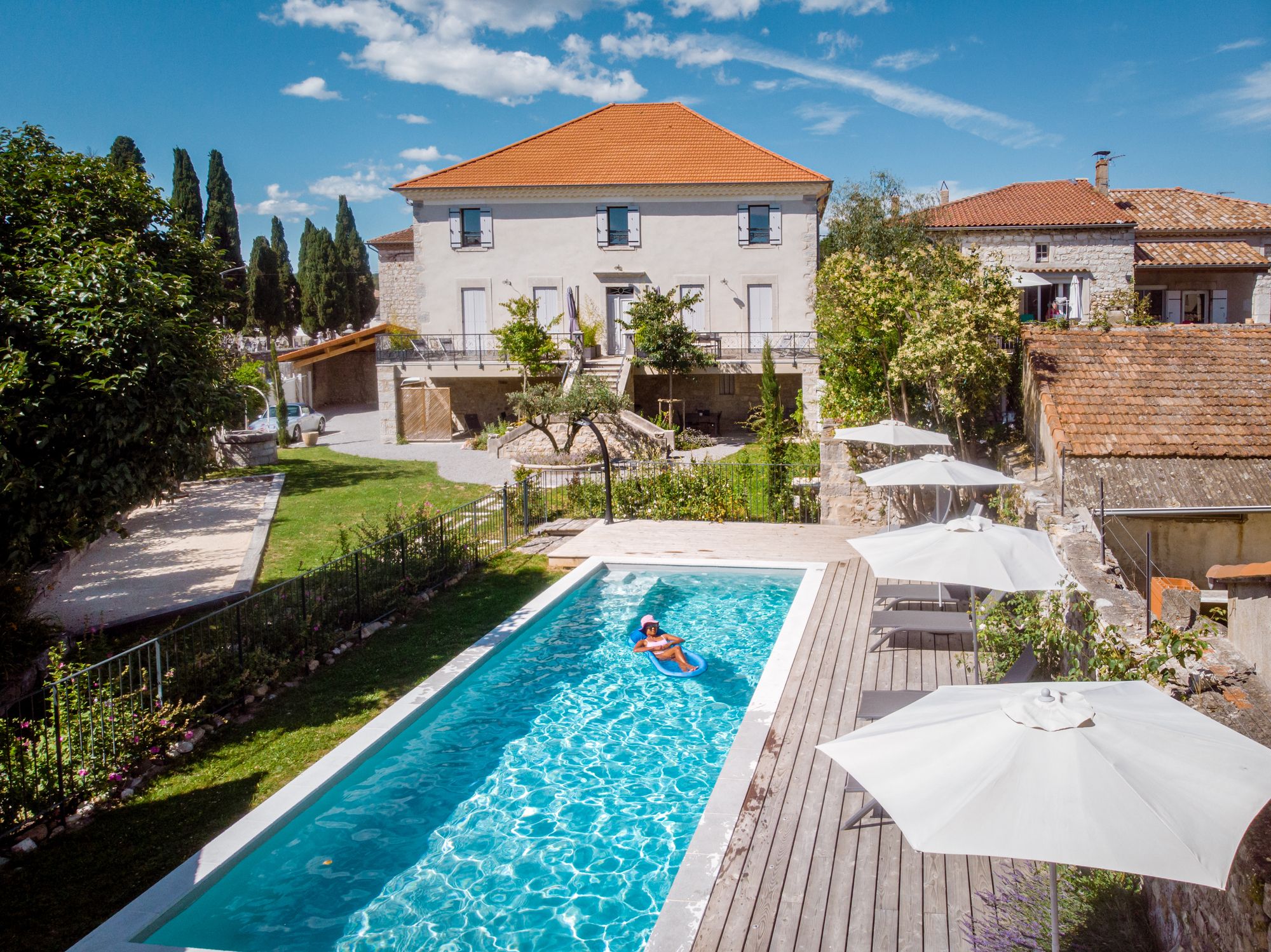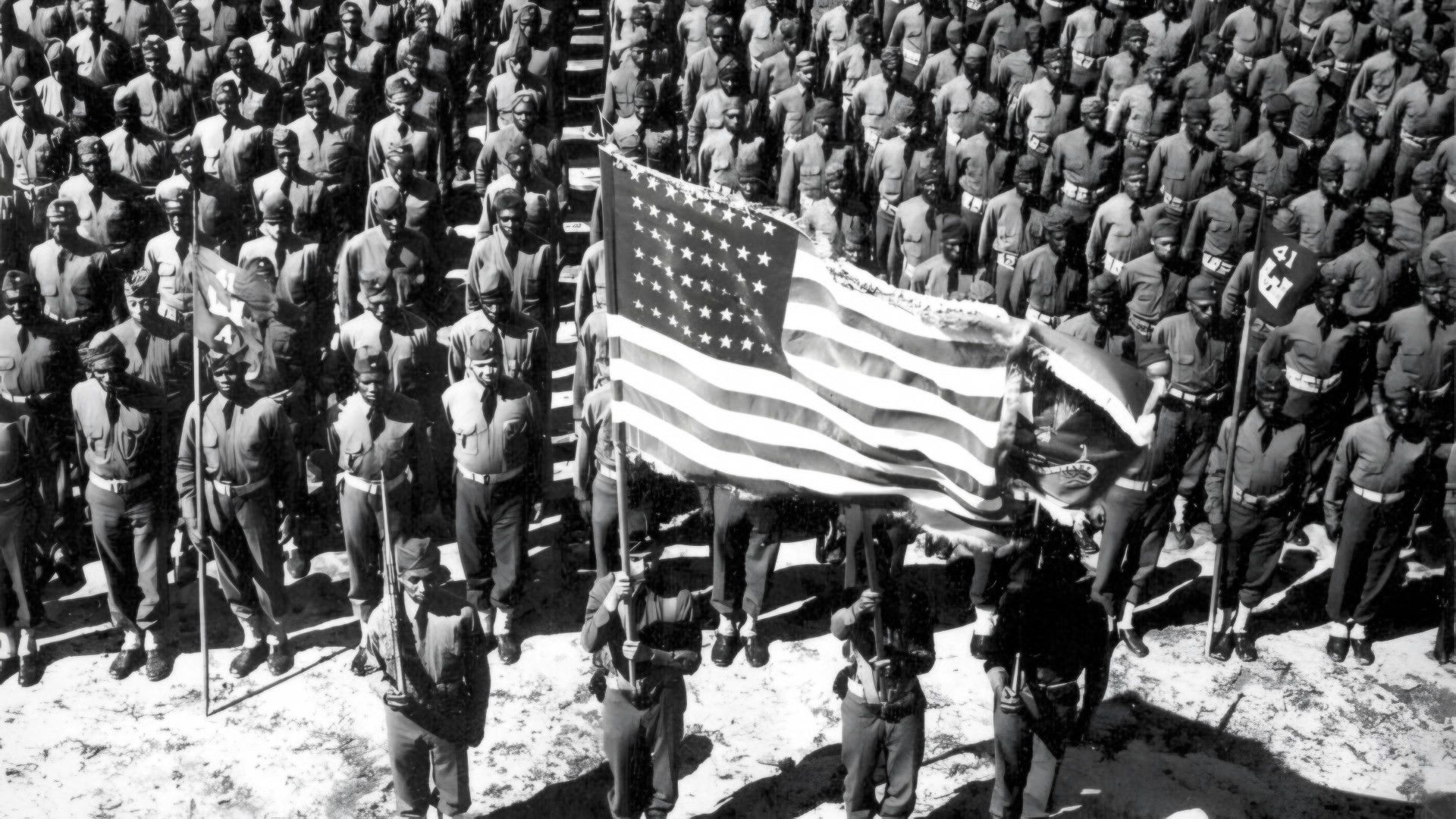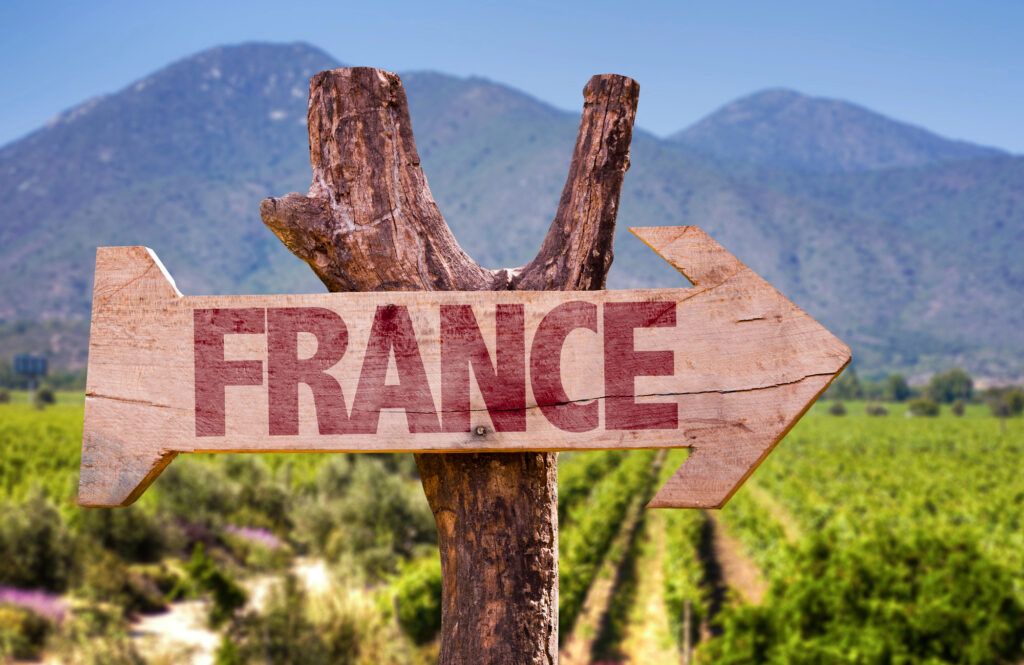Normandy’s that rare place where you can touch history, catch sea breezes, and wander from medieval lanes to windswept cliffs—all in a single week. Whether you’re drawn by echoes of D-Day or just want to eat cheese by the harbor, there’s a real mix of experiences. Honestly, the region makes it easy to blend meaningful visits with everyday pleasures that feel distinctly northern French.
Here’s a rundown of ten ways to get a feel for Normandy right now. You’ll bounce between memorials, gardens, museums, and food traditions, all without spending half your trip in the car. The idea? Savor September—don’t just race through the “must-sees.”
1) Visit the D-Day Landing Beaches and Museums
Start at Omaha Beach, where American troops landed on June 6, 1944. These days, the sand feels peaceful, but the history lingers. Up the bluff, the Normandy American Cemetery gives you a sweeping view of the coast.
Utah Beach brings a different vibe. The Utah Beach Museum sits right on old German bunkers, with exhibits showing off landing strategies and wartime gear. There’s even a restored B-26 bomber inside.
Sword, Juno, and Gold beaches focus on British and Canadian stories. Each spot tells a piece of the wider D-Day puzzle. The Pegasus Bridge Museum highlights the airborne operation that kicked things off before dawn.
You’ll need a car for this one—the sites are spread out, and public transport’s pretty limited. Renting wheels lets you see both the coast and inland museums like the Mémorial de Caen without stress.
2) Explore the Bayeux Tapestry Museum
At the Bayeux Tapestry Museum, you’ll find a nearly 70-meter-long embroidery showing the Norman conquest of England in 1066. It’s one of those rare artifacts where you can literally walk through the story.
An audio guide walks you through each scene, so you don’t need to be a medieval buff to follow along. The explanations are straightforward, and you can just let the story unfold.
Besides the tapestry itself, the museum covers how it was made and the world it came from. You’ll get a sense of why it’s survived all these centuries.
Crowds can be thick, especially in peak months. For a quieter look, try to get there early. Tickets are reasonable. If you’ve got time, the nearby cathedral and old town are worth a stroll too.
You can check out more on the Bayeux Tapestry Museum and maybe pair it with other Bayeux sights.
3) Stroll through the Gardens of Claude Monet in Giverny
Giverny’s just about an hour from Paris, so it’s an easy day trip if you’re spending the week in Normandy. The village itself is charming, but let’s be honest—you’re here for Monet’s gardens.
Wandering through, you’ll see the water lilies, the Japanese bridge, and the wild tangle of flowers that inspired so many of his paintings. The Water Garden and Clos Normand both feel almost like walking into one of his canvases.
Monet’s house, painted pink with green shutters, is open too. Inside, rooms look much as they did when he lived there, right down to his studio and collection of Japanese prints.
The gardens are open from April to early November, so September’s perfect timing. It does get busy, especially midday. If you want a bit of peace, come early.
For hours and ticket info, check the official page for Monet’s House and Gardens.
4) Tour the historic Château de Caen
Right in the middle of Caen, you’ll spot the Château de Caen—built by William the Conqueror back in the 11th century. The stone walls are massive, and stepping through the gate, you get a real sense of the city’s roots.
Inside, you can check out the Museum of Normandy and the Museum of Fine Arts. They’re both manageable in size, so you won’t get museum fatigue. You’ll get a mix of regional history and European art.
From the ramparts, the views stretch across Caen’s rooftops—a jumble of medieval, postwar, and modern buildings. It’s a reminder of how much the city’s been through since 1944.
Some paths are uneven and a bit steep, so if that’s an issue, stick to the museums and courtyards. The outdoor areas are free, so you can wander even if you skip the paid exhibits.
There’s more on the site and Caen’s other spots in this guide.
5) Attend a seafood tasting event in Deauville
Deauville’s on the Côte Fleurie, and seafood’s a big deal here. You’ll find tasting events in markets or during local food festivals, with oysters, mussels, and scallops straight from nearby waters.
Usually, these events are laid-back, sometimes paired with regional cider or white wine. It’s more about sampling and chatting than sitting down for a formal meal. You might pick up tips on shucking or pairing, too.
Some tastings draw crowds from all over Normandy, while others feel more local. If you’re not into jostling with tourists, weekdays tend to be quieter.
Check the Deauville events calendar for dates. Schedules shift with the fishing season, so double-check before you go.
Seafood here is fresh and top-notch, so prices reflect that. Tastings aren’t crazy expensive, but it’s not street food either. Bring cash—some stalls still don’t take cards.
6) Discover the medieval town of Honfleur
Honfleur sits right where the Seine meets the Channel. The Vieux Bassin, or old port, is the heart of town, lined with tall, skinny houses and narrow quays. Walking here, you really feel the centuries of maritime history.
Pop into the Église Sainte-Catherine, a wooden church built by shipbuilders in the 1400s. Its twin naves look like upside-down boats—a quirky reminder of the town’s shipbuilding past. It’s actually one of France’s largest wooden churches.
Wander the side streets and you’ll find half-timbered houses, tiny museums, and quiet corners. Weekday visits are calmer, so you can soak up the details without elbowing through crowds.
Honfleur’s light and harbor views drew the first Impressionist painters, like Monet and Boudin. Today, art galleries still line the port, keeping that creative vibe alive.
If you want a quieter visit, skip peak summer and big holiday weekends. Mornings and evenings are usually best, as Normandy Tourism suggests.
7) Walk the coastal trails of the Alabaster Coast
The Alabaster Coast runs between Le Havre and Le Tréport, marked by dramatic white chalk cliffs and tucked-away villages. The scenery’s wild and windswept—bring a jacket, honestly.
The GR®21 trail stretches about 190 kilometers along the cliffs, connecting towns and viewpoints. It was named France’s favorite hike in 2019, and for good reason. You don’t have to do the whole thing—shorter sections still serve up big views.
Some stretches pass old World War II bunkers, especially near Fécamp, Dieppe, and Yport. If you’re into history, it adds another layer to the landscape.
Étretat is the headliner, famous for its arches and compact town center. It can get crowded, but the best views are just a quick walk from town. If you want solitude, try the smaller villages along the Alabaster Coast.
8) Experience a cider tasting in Pays d’Auge
The Pays d’Auge is cider country, and the Cider Route is a 40-kilometer drive linking villages like Beuvron-en-Auge, Cambremer, and Bonnebosq. Expect half-timbered houses and plenty of family-run cider farms.
You’ll find more than twenty producers along the route, many offering guided tastings—dry, sweet, sparkling, and sometimes Calvados or pommeau, too.
It’s not just about the drinks. The drive itself winds through rolling hills and orchards, making for a pretty relaxing outing. The tourist office in Cambremer hands out detailed maps for the Normandy Cider Route.
Tastings are quick—usually under an hour—so you can fit in a few stops. Many farms close for lunch, so check times before heading out. Nothing worse than pulling up to a locked door.
9) Visit the Musée des Beaux-Arts de Rouen
The Musée des Beaux-Arts de Rouen is one of France’s top regional museums. It opened in 1801, moved to its current spot in 1888, and got a major facelift in 1994.
Inside, you’ll find art from the Renaissance through the 20th century—paintings, sculptures, and decorative arts. There’s Monet, Renoir, and Degas, plus earlier French masters like Poussin and Delacroix, and even Caravaggio and Velázquez.
The galleries are bright and open, and the size feels just right—not so huge you get lost, but big enough for some real depth. Entry is often free, which is always a nice surprise.
For up-to-date info on hours and exhibits, check the Rouen Museum of Fine Arts guide or the Normandy Tourism overview.
10) Explore the Normandy American Cemetery
You’ll find the Normandy American Cemetery in Colleville-sur-Mer, perched above Omaha Beach and the English Channel. The grounds stretch over 172.5 acres and hold 9,388 American soldiers who died during the Normandy campaign. There’s also a memorial with the names of 1,557 missing service members carved into stone.
As you walk among the white crosses and Stars of David, it’s hard not to notice how meticulously the groundskeepers care for everything. The rows are orderly, the grass clipped just so, and the whole place feels hushed. At the center, a memorial displays maps and inscriptions that shed light on the June 1944 operations.
Standing there, you get a sense of place. The view sweeps down toward Omaha Beach, where American troops landed under fire on D-Day. The direct path from the cemetery to the beach closed in 2016 for security, but you can still feel the link between the two.
If you’re planning a visit, keep a few things in mind. The cemetery’s open every day and it’s free to enter, though you’ll go through security at the gate. Guided tours and the visitor center exhibits help put the landings and the soldiers’ stories into perspective. For details, check out the American Battle Monuments Commission.
Essential Tips for Visiting Normandy in September
September in Normandy? Fewer crowds, cooler weather, and a shot at local festivals and autumn flavors. But you’ll want to be ready for shifting weather, figure out how you’ll get around, and get a feel for the local rhythm.
Weather and Packing Advice
Normandy’s September weather tends to be mild but unpredictable. Daytime highs usually land between 14°C and 20°C, with evenings dipping to about 10°C. Rain shows up often, though it’s usually more of a drizzle than a downpour.
Pack layers—think sweaters you can pull on or off as needed. A waterproof jacket and sturdy shoes are must-haves, especially if you’re hiking or wandering the D-Day beaches. Umbrellas help in towns but get tricky when the wind picks up by the sea.
Bring a light sweater for evenings; sometimes indoor heating isn’t switched on this early. If you’re thinking about swimming, know the sea hovers around 17°C in September—brisk, to put it mildly. A wetsuit might be a good call if you’re planning a longer dip.
Local Transportation Options
Normandy covers a lot of ground, and public transit mostly connects the bigger towns. Trains link places like Caen, Rouen, and Bayeux, while buses reach out to smaller towns but don’t run as often off-season. Renting a car gives you the most freedom, especially if you’re aiming for out-of-the-way villages.
Driving’s generally straightforward, but watch for narrow roads and the occasional tractor. Parking in old town centers like Honfleur can be a headache, so look for lots just outside the main area.
Cycling’s a solid alternative. The region has plenty of marked bike routes, including scenic paths along the Seine and the coast. Trains usually let you bring your bike, which makes mixing rail and cycling pretty easy. Taxis and rideshares are around in cities, but don’t count on them in the countryside.
Cultural Etiquette and Customs
Folks in Normandy appreciate a polite hello. Always say bonjour when you walk into a shop or restaurant, and au revoir when you leave. Skipping this feels rude to locals.
Meal times are pretty set. Lunch runs from noon to 2 p.m., and lots of places close up until dinner. Don’t expect to find food at all hours.
At memorials or cemeteries, keep your voice down and be respectful. You can usually take photos, but some sites ask that you do so quietly. In markets, greet stallholders before browsing, and don’t handle produce unless you’ve asked.
Tipping isn’t required since service is included, but rounding up or leaving a bit of change is always nice.
Making the Most of Your Normandy Experience
Making the most of Normandy means juggling history, food, and the practicalities of getting around. You’ll want to check out nearby towns, try what’s in season, and think ahead about health and safety as you move from place to place.
Recommended Day Trips
Day trips are a great way to see more of Normandy without packing up your bags every night. Mont-Saint-Michel is less than two hours from Bayeux, so it’s easy to add to your plans. Watching the tides there is pretty unforgettable.
Looking for something a bit quieter? Head to Honfleur. The old harbor, with its slate-roofed houses, hints at Normandy’s seafaring past. There are small galleries and seafood spots that don’t get the same crowds as the bigger cities.
If WWII history is your thing and you want to go beyond the D-Day beaches, try Falaise. That’s where the Allies closed the Falaise Pocket in August 1944. The Memorial Museum there digs into the details in a way most touristy sites don’t.
A car makes these trips much easier. Trains do run, but you’ll probably face transfers and longer waits. Parking’s usually available, though coastal towns can get packed on weekends.
Seasonal Foods and Drinks
Normandy’s all about dairy, apples, and seafood, and September’s the perfect time for all three. Markets overflow with Camembert, Pont-l’Évêque, and Livarot—cheeses that taste even better when you buy them straight from the maker.
Seafood’s at its peak. Mussels—especially moules de bouchot—are in season and usually come piled high with fries. Oysters from the Cotentin Peninsula are top-notch in early autumn.
Apples turn up everywhere, especially in drinks. Try the local cider, Pommeau (that’s apple juice mixed with apple brandy), and Calvados (apple brandy). Many farms offer tastings, but remember, Calvados packs a punch—plan your ride home.
Not into alcohol? Keep an eye out for fresh-pressed apple juice at roadside stands. It’s cloudy, tangy, and has way more flavor than the stuff in bottles.
Travel Safety and Health Considerations
Normandy’s pretty safe overall, but a bit of common sense goes a long way. Watch your stuff in busy spots like train stations—petty theft does happen. Out in the countryside, crime’s rare, though shops and services tend to shut early, so don’t count on late-night essentials.
Medical care’s solid, but small towns usually just have a clinic or two. It’s smart to pack a basic first-aid kit. Pharmacies are everywhere and, honestly, the pharmacists here are usually your best bet for quick advice.
September weather? Unpredictable. One minute it’s sunny, the next you’re caught in a downpour, especially near Étretat’s cliffs. Toss a waterproof jacket and sturdy shoes in your bag—trust me, you’ll thank yourself later.
If you’re driving, French law says you need a reflective vest and a warning triangle in your car. Forget those, and the police might fine you on the spot. Oh, and rural fuel stations? They close up early, so don’t push your luck with an empty tank after sunset.

